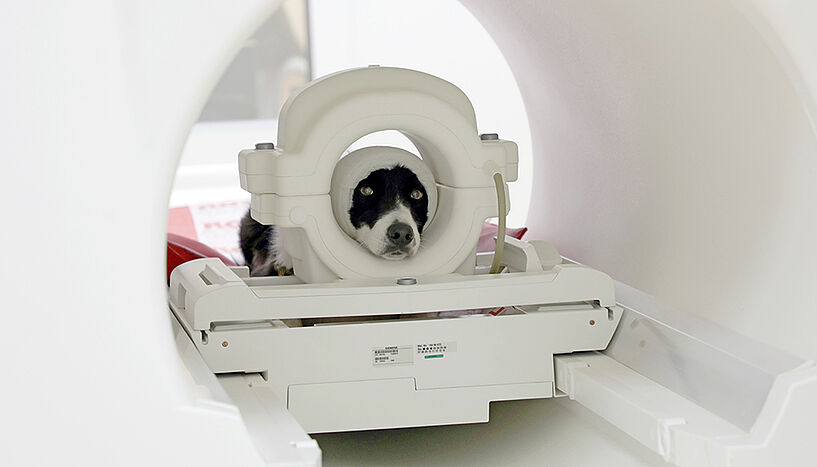
Fig. 1: Pet dog Maeva is ready for data collection in the magnetic resonance imaging scanner. The bandage serves as an additional noise protection in combination with earplugs. © University of Vienna CCNU (ccnu.univie.ac.at)
Dogs and humans process body postures similarly in their brains
A study by researchers at the University of Vienna and the University of Veterinary Medicine Vienna shows that information from body postures plays a similarly important role for dogs as it does for humans. The results offer new insights into how dogs and humans perceive each other and their environment. They confirm that the temporal lobe plays a central role in social communication and perception. The study is currently published in the journal Communications Biology.
Humans and primates have brain regions in the temporal lobe that are specialised in perceiving faces and bodies. Dogs also possess a temporal lobe that evolved independently of the primate brain. In recent years, behavioural research has shown that dogs, like humans, are experts in perceiving facial expressions and bodily gestures such as hand signals. "Whether this behavioural expertise is also reflected in the dog brain was the content of our study. Only a few research groups can conduct comparative magnetic resonance imaging studies with dogs," explains first author Magdalena Boch.
The research group led by Magdalena Boch, Claus Lamm and Ludwig Huber is one of currently only four in the world conducting magnetic resonance imaging (MRI) studies with pet dogs. They developed training protocols to accustom the dogs to the MRI environment gradually. The dogs are not sedated and can leave the MRI at any time.
The study with 40 human participants and 15 pet dogs now provided the first evidence that dogs, like humans, have a brain region in the temporal lobe that is specialised in the visual perception of body postures. In addition, further regions in the dog brain are equally involved in perceiving faces and bodies. In contrast to humans, however, this did not only affect visual brain regions. When dogs look at faces and bodies, there are also differences in activation in areas responsible for processing smells.
In humans, the authors additionally identified already known regions specialised exclusively in face perception. "We humans often focus on the face when communicating with others. Our results suggest that faces are also an important source of information for dogs. However, body postures and holistic perception seem to play a superior role," Magdalena Boch explains.
The specialised brain regions were equally active in dogs when they looked at pictures of conspecifics or humans. This underlines the close bond between dogs and humans, says Ludwig Huber. "Dogs and humans may not be closely related, but they have been close companions for thousands of years. Therefore, comparing dogs and humans also gives us new insights into the so-called convergent evolution of social perception and information processing processes," Claus Lamm concludes.
Original publication:
Magdalena Boch, Isabella C. Wagner, Sabrina Karl, Ludwig Huber, & Claus Lamm: Functionally analogous body- and animacy-responsive areas are present in the dog (Canis familiaris) and human occipito-temporal lobe. Communications Biology (2023)
DOI: 10.1038/s42003-023-05014-7
Pictures:
Fig. 1: Pet dog Maeva is ready for data collection in the magnetic resonance imaging scanner. The bandage serves as an additional noise protection in combination with earplugs. © University of Vienna CCNU (ccnu.univie.ac.at)
Fig. 2: Four-legged study participant Balian takes a short break on the magnetic resonance imaging (MRI) scanner bed. He can stop the training and data collection anytime and leave the MRI via a specially built ramp. The bandage serves as an additional noise protection in combination with earplugs. © University of Vienna CCNU (ccnu.univie.ac.at)






